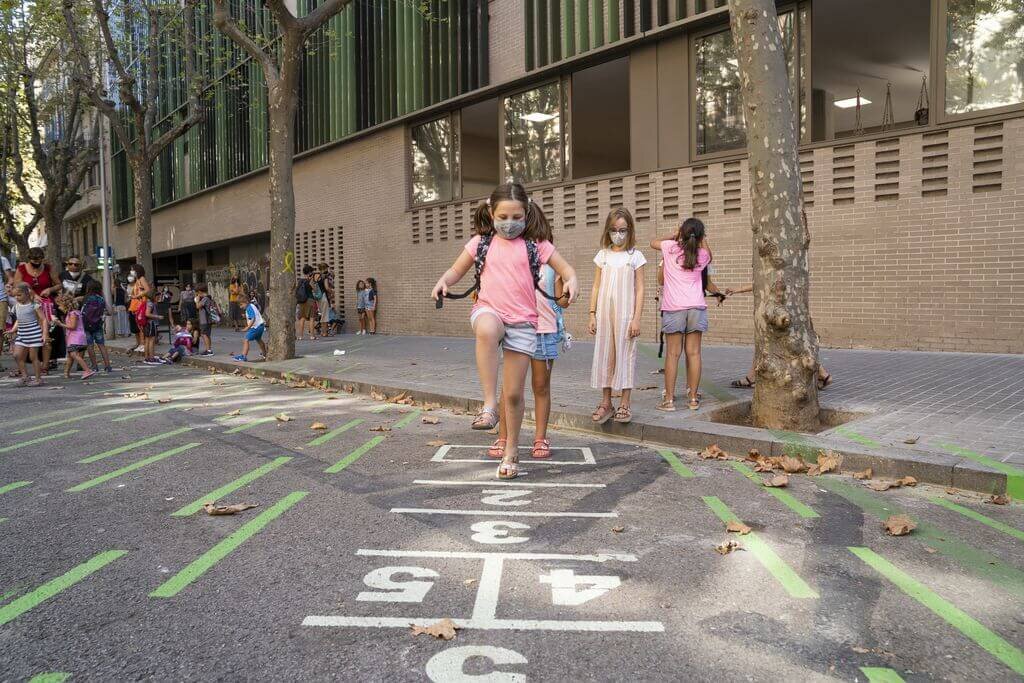A Forest School is an outdoor educational model where students learn through play, exploration, and risk-taking support.
Have you ever taken classes outdoors? Many of us had experienced one or two courses of this style in our primary school years when the teacher told us that we would do some activity outside the classroom. No one would deny how the atmosphere of the classroom changed. This is the main focus of the phenomenon known as forest schools. The Forest Schools Association in the United Kingdom defines forest schools as a learning style based on an outdoor culture where students learn through play, exploration, and risk-taking to develop personal confidence and strengthen self-esteem interacting in a natural environment.
This educational process arrived in the United Kingdom in 1993, inspired by the Scandinavian educational method, which held education in nature. This model is concentrated in preschool and lower primary school levels. The class sessions are two hours minimum in a 24-week school term having two semesters; however, these specifications may vary depending on the institution using the model. There are currently Forest Schools around the world, with the highest concentration in Europe, mainly in England and Scotland, and other institutions in Spain, Denmark, Finland, and New Zealand, among others.
Some of the advantages that students derive from this method over the traditional one are that they are put in a context where learning is necessary to solve a problem, which inspires them to absorb this learning. The schools also seek to maintain an essential balance in their lessons to ensure that teachers can meet their students’ needs while reflecting on school practices.
Risk-taking is essential in the learning process.
The founder of the Forest School Teacher Institute, Jean Lomino, said that one of the main differentiating factors for her between current education and what she practices is getting the students to act. “If I walk into a classroom and see students writing at their desks, I would find problematic because learning should be experienced.”
Also, Lomino commented that risk-taking is essential in the learning process because it gives students more freedom to make mistakes, unlike traditional education, where errors are penalized. Forest School students learn from their mistakes, making them feel less pressured and happier in their classes.
Each institution has its added innovations. In the school that Jean Lomino heads, it is mindfulness. Everyone involved in the school takes part in this practice, be it students, teaching staff, or families.
Outdoor teaching reduces the risk of contagion
How could this educational model grow in the context of the pandemic? The British government issued a statement this summer inviting people to participate in more outdoor activities with their appropriate restrictions to prevent contagion. The Forest Schools in this country have been able to resume their classes with 15 students and one leader per class. Many institutions have been encouraged to make these same changes, to hold their classes outdoors with the exact specifications as the risk of outdoor contagion is considerably less. Hence, the students would not be forced to postpone their studies or take them in a virtual format.
Latin American countries could adopt Forest Schools as a solution for educational institutions. Such schools would solve other problems such as childhood obesity, reduce the time children spend daily in front of a screen, and let them develop skills they would not find in a physical or virtual classroom. We can take Denmark as an example, as it was one of the first countries to resume classes in April for children under the age of 11, a population who were considered to be dependent on their parents’ care to take virtual courses from their homes.
“School check-in and check-out times are staggered, and the number of hours at school is reduced,” Michelle Unzué commented in her blog, “Candles and Vikings.” A mother of two, Spanish, currently living in Denmark, Unzué describes her experience with her daughters’ education during the pandemic. She points out that schools were working with four schedule shifts that did not overlap each other, divided according to ages and grades. For school arrivals and dismissals, the parents were not allowed to enter for their children; the teachers were the ones who brought the children. One of the schools’ main goals was to hold most of the classes outdoors if the weather conditions permit it.
The EdNa Association of Education in Nature in Spain is responsible for promoting quality projects and educational activities in nature. They have an “EdNa Guide” that aims to be a guidance protocol developed based on scientific evidence, with in-depth knowledge of the sector, and the Spanish authorities’ official recommendations for those institutions seeking to adapt their activities to an outside format and work in nature.
Thanks to initiatives like the Forest Schools and the implementation of preventive COVID-19 measures, contagions have been controlled without postponing classes. Instead, they have taken place in outdoor environments such as parks, courtyards, or even pedestrian streets. The courses do not have to occur in forests or natural parks necessarily but can be adapted to each city’s particular characteristics. For this, we need to adapt, change our school dynamics, and learn to work in various environments, finding the resources in reach to take maximum advantage of our possibilities and move forward once again.
Translation by Daniel Wetta.
This article from Observatory of the Institute for the Future of Education may be shared under the terms of the license CC BY-NC-SA 4.0 
)
)


)